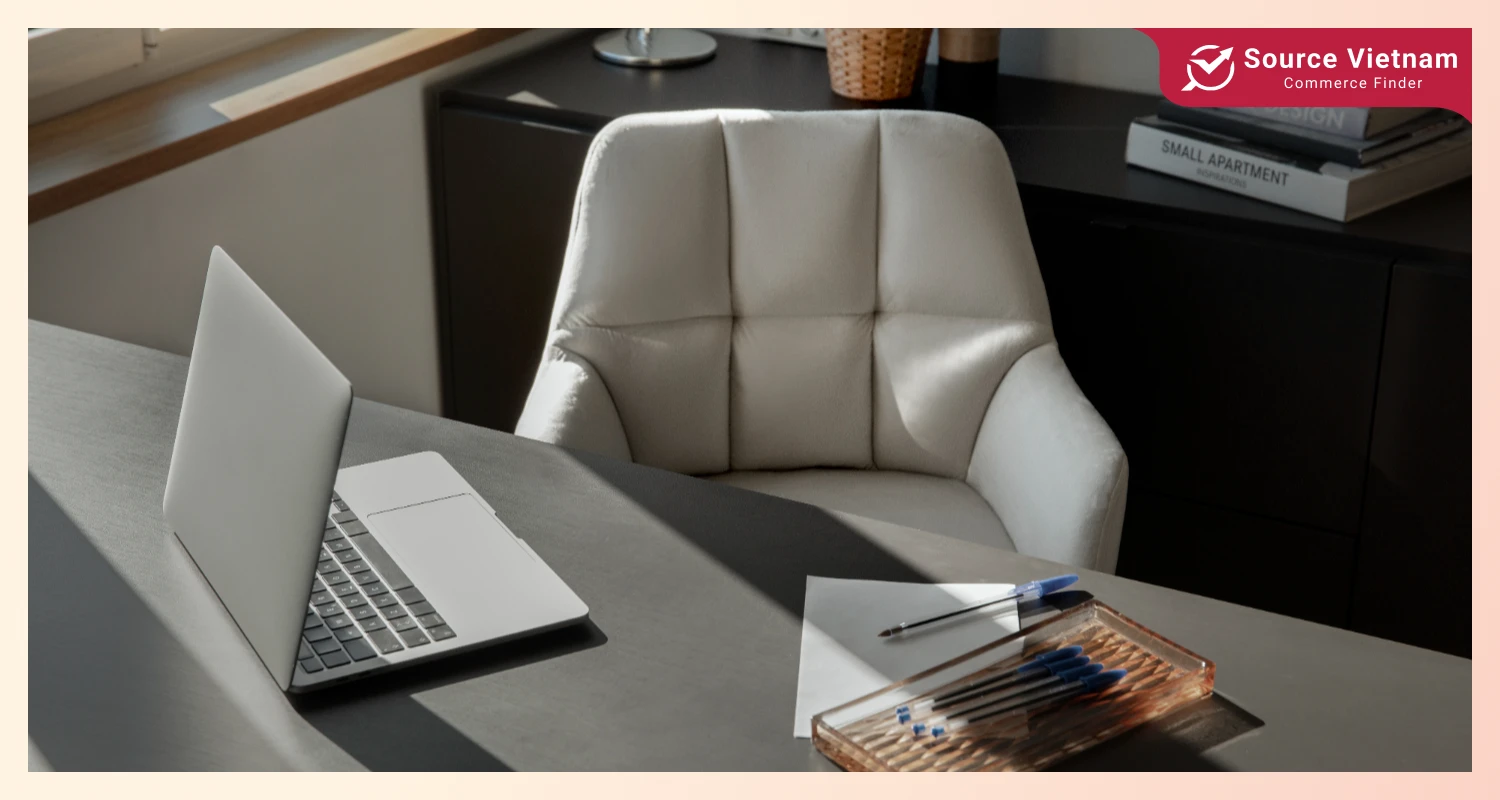Insight:
- The Asia-Pacific office furniture market is experiencing significant growth driven by many factors.
- Key trends include technological integration, ergonomic design, sustainability, and customization to meet evolving workplace needs.

Market overview: What is new in the Asia-Pacific market?
The office furniture market in the Asia-Pacific region is forecasted to increase significantly. The increasing number of the working population drives the growth of this market. Many factors contribute to the expansion of the furniture market in this region. Among the most significant are economic development and enhanced working conditions, stimulating the demand for office furniture.

Business growth and recovery plans from the COVID-19 pandemic have affected the office furniture market. Organizations have opted to Incorporate more smart desks and charge solutions due to market innovations, and if they do not, they risk failing. The work-from-home specification also limited the amount of traditional office space in demand. As a result of the efforts put in place worldwide to try and control the spread of the pandemic, organizations came up with these ideas.
Furthermore, the increasing number of regional corporate offices is forecasted to fuel market growth. China and India are the highlight leading markets in the region. Economic growth and improved working conditions also drive demand in these markets.

China is taking over the manufacturing and export business of office furniture completely. New business establishments paired with a growing economy in China highly contributed to the increasing demands for office furnishing. In China, the demand for office furniture increases every year. The manufacturing plant is equipped with state-of-the-art production technology and brings forth office furniture that is well known to the users for its quality, dependability, and economy.
As one of the largest exporters and suppliers of office furniture, China exports its products to countries such as the United States, Germany, France, the United Kingdom, and Japan. Both local and foreign office furniture manufacturers have contributed to the growth of the Chinese market for office furniture. After years of development, the office furniture industry in China has grown into a large-scale industrial sector. Given the persistent and growing demand, China’s office furniture market is poised for continued growth in the long term.
Read more >>> Top 10 Furniture Manufacturers in VietNam You Should Know in 2025
Desks and chairs are the two dominant products in the market segment

The Asia-Pacific office furniture market is experiencing robust growth, with various product segments playing a pivotal role. Some of the highlight products include:
- Work desks: this product has diverse designs and materials. They range from traditional desks to standing and smart desks with integrated technology, catering to a wide range of user needs. They also produce from various materials such as natural wood, engineered wood, metal, and glass. Each material provides distinct aesthetic and durability advantages. Work desks are increasingly equipped with smart features like height adjustability, built-in charging ports, and wireless connectivity, providing convenient and modern workspaces.

- Office chairs: As far as office chairs are concerned, ergonomic chairs always rank on top because of the proper postures they help maintain, especially reducing back and neck pain. Swivel chairs, on the other hand, allow flexibility and movement and are best suited to places of work. Sofas offer comfortable reclining surfaces and thus work well in reception and collaborative areas.
- Filing cabinets: Steel cabinets are well-liked for their sturdiness and high security. Hence, these are kept for important documents, while wooden cabinets are full of grace and warmth, which enables them to go with almost any modern office design. Combination cabinets with drawers and open shelves meet various storage needs.
- Other furniture products: Different sizes and types of conference tables can easily accommodate minutes to small meetings, whilst bookshelves, in a wide variety of designs and materials, help keep organized documents or books; accessories such as desk lamps, rugs, and curtains all fall into place as part of the workspace.

Covid-19 has changed the behavior of consumers and workers. After this pandemic, the adoption of remote work has increased across Asia. As people transitioned to working from home, the demand for home office furniture, especially desks and chairs, skyrocketed. These are essential components of a fully functional home office setup.
The more the workforce has to work at home for longer, the greater the need for ergonomic comfort. Seating and desks are now necessary for a comfortable, productive workspace. Consumer behavior shifts toward personalized spaces where they can be further customized pieces according to preferences.

This trend particularly applies to chairs and desks, where height, materials, and design choices are crucial. The Asian market has witnessed a surge in entrepreneurship and home-based businesses. Entrepreneurs frequently need well-furnished home offices, which increases the demand for desks and chairs. Desks and chairs, especially those available at various prices, have become more accessible to a wider range of consumers, contributing to their dominance in the home office furniture market.
Read more >>> News and Trends in the European Home Office Furniture Market
New trends in the office furniture market in the Asia-Pacific region

Adjustable-height desks with lumbar-supporting chairs and breathable materials would be up for probably those ergonomic aspects that, in effect, enhance the comfort of employees while eliminating the hazards that may be present in almost every workplace environment. As offices are sprouting more biophilic aspects, it may comprise plant introduction, natural lighting, and natural materials in the office spaces to create an easy and productive environment.
Integration of technology in office furniture is becoming more and more advanced. New types of smart furniture, like desks equipped with built-in charging and wireless connectivity, will even create mood lighting. Demand is increasing for high-tech collaboration tools, such as height-adjustable tables for stand-up meetings or mobile work surfaces designed to make teamwork easier.

Sustainability in furniture is increasingly focused on two key areas: using eco-friendly materials, such as recycled plastics, bamboo, and reclaimed wood, which is gaining momentum, and the circular economy, with companies increasingly investing in furniture designed for easy repair, reuse, or recycling.
Personalization and customization are trending today, with modular forms-furniture that can be easily configured again to suit different needs and preferences, and much sought after by customers, with the companies manufacturing them giving options for customization options like various fabric choices, finishes, and add-on features to satisfy individual preferences.

Flexible furniture that can switch easily from the office to home and then back again is part of what is required for a hybrid work solution. Such movable furniture should be easy to reconfigure into workstations and will be increasingly demanded in light of hybrid office work models’ popularity for high-quality home office furniture.
These trends reflect the changing needs of businesses and employees in the Asia-Pacific region. Companies that embrace these trends and offer innovative, sustainable, and employee-centric solutions will likely thrive in this evolving market.
Conclusion
In conclusion, the Asia-Pacific office furniture market is experiencing significant growth driven by economic development, improved working conditions, and the increasing working population. This growth is further fueled by the demand for technologically integrated furniture, the rise of hybrid work models necessitating both in-office and home office solutions, and a strong emphasis on ergonomics, biophilic design, and sustainability.















